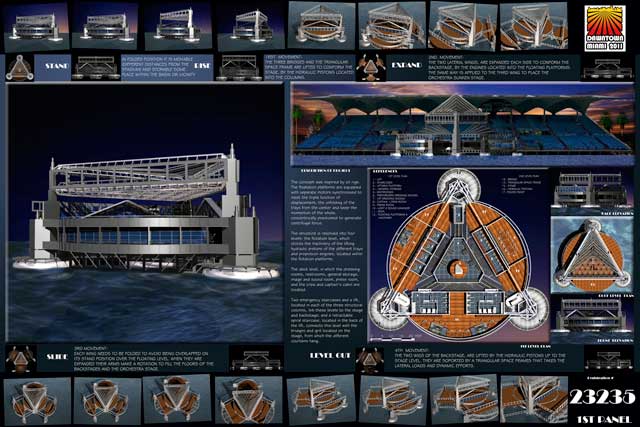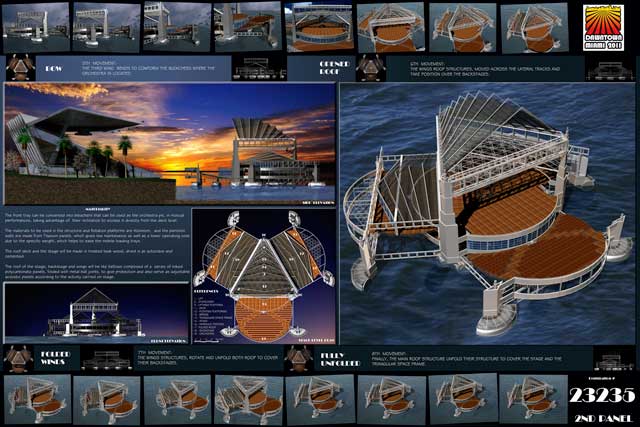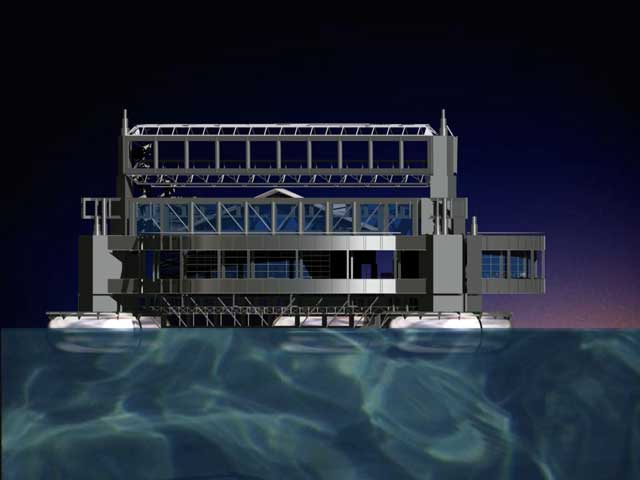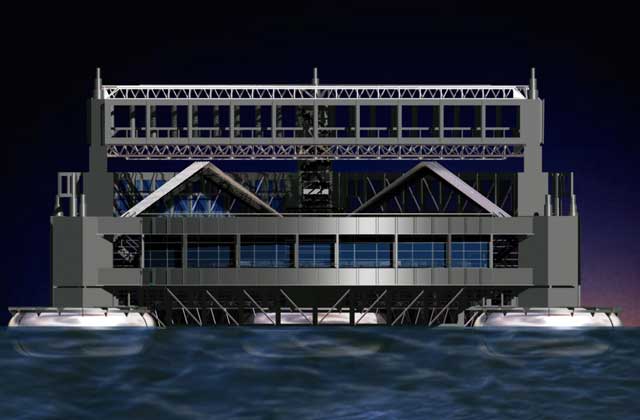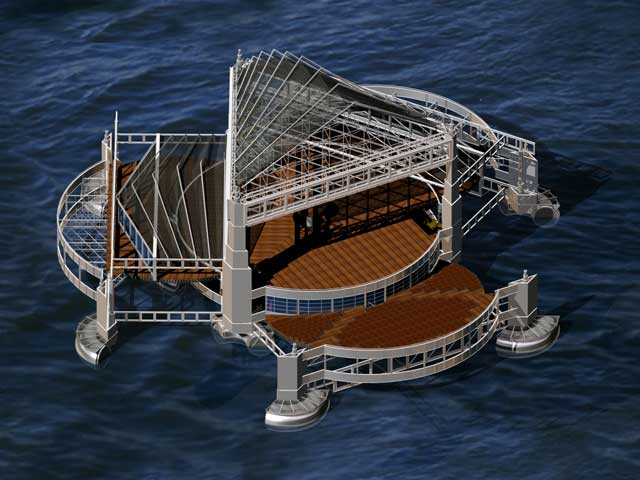Tag: Architecture
Tiny House Architectural Contest
The new conditions of the third millennium have led us to rethink our way of life.
We have overwhelmed nature with overpopulation, which is causing positive reflection aimed at ending an era of destruction of our habitat, as we have known it.
We must think about reducing the space we have appropriated to minimize these effects by optimizing land use by alternating it over time.
Globalization and the different time zones of the planet could lead to a reorganization of working times around the world.
Working from home would eliminate the movement of large masses of vehicles at fixed times that cause large traffic jams during peak hours.
The areas that we must gradually modify are those in which we have abused the appropriation of natural soil, with constructions that have waterproofed the surface of the earth, such as roads, roofs, solar panels, etc. causing the modification of the natural water cycle, as well as air pollution.
To avoid this, the strategy must focus on the realization of new projects that minimize its total area and are surrounded by green spaces.
As for the single-family house, we have usually assigned a room for each use. Therefore, a bedroom is used a third of the day, (8 hours daily) Kitchen, one hour per meal (4 hours in 24) and so on with each of the uses.
In California, many young people share their housing needs by taking advantage of the fact that students and workers sleep at different times. This could well be optimized if a system of shared shifts, commonly called a “hot bed”, were planned. Similarly, it is not necessary for a house to have more than one bathroom that is used for no more than an hour a day.
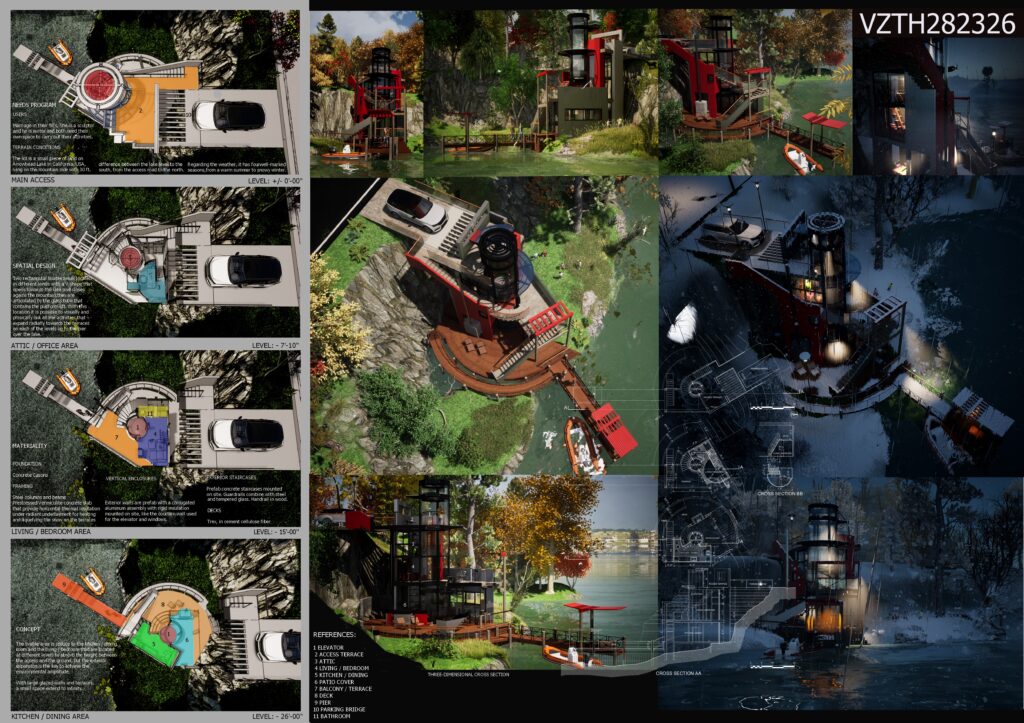
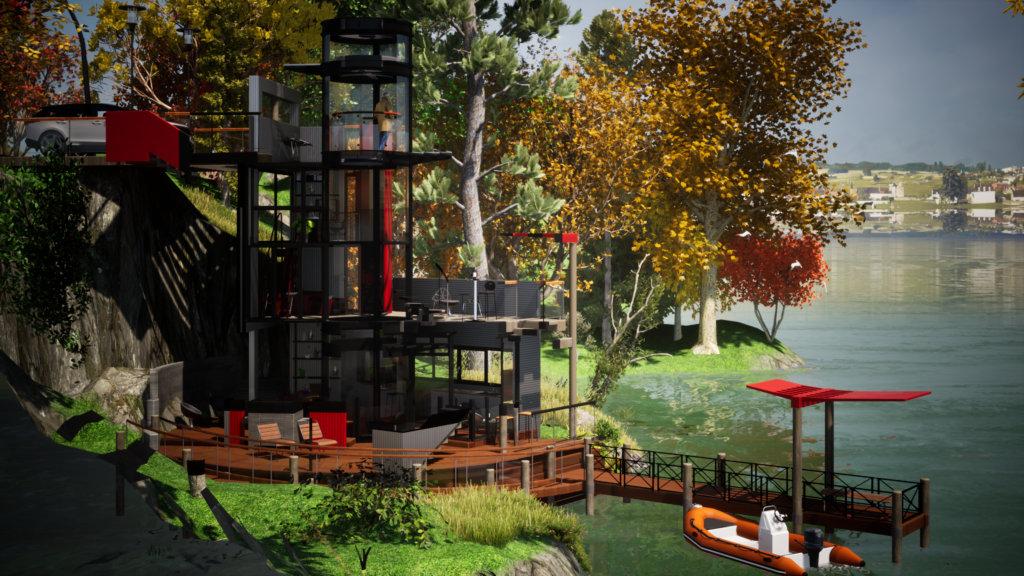
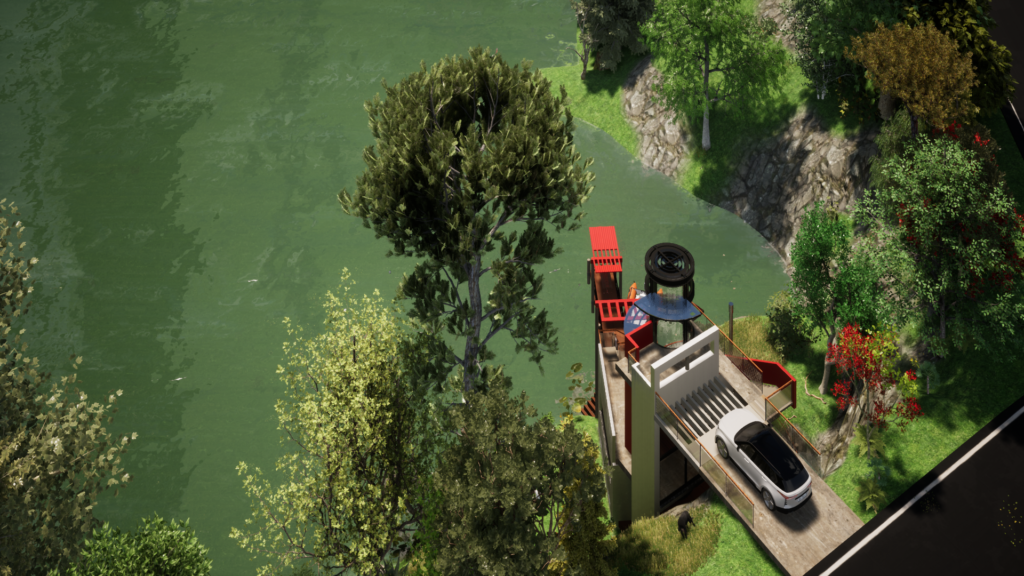
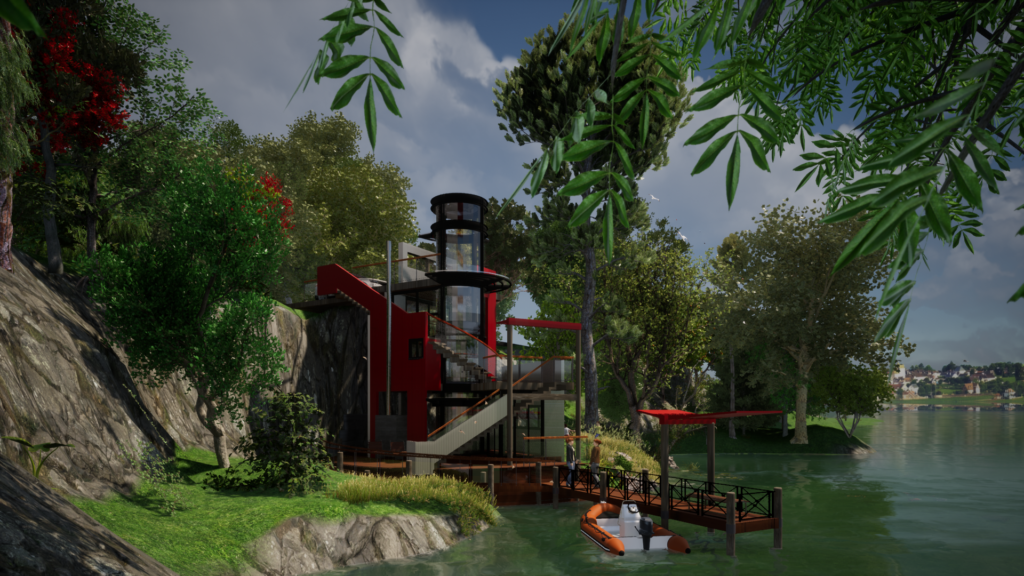
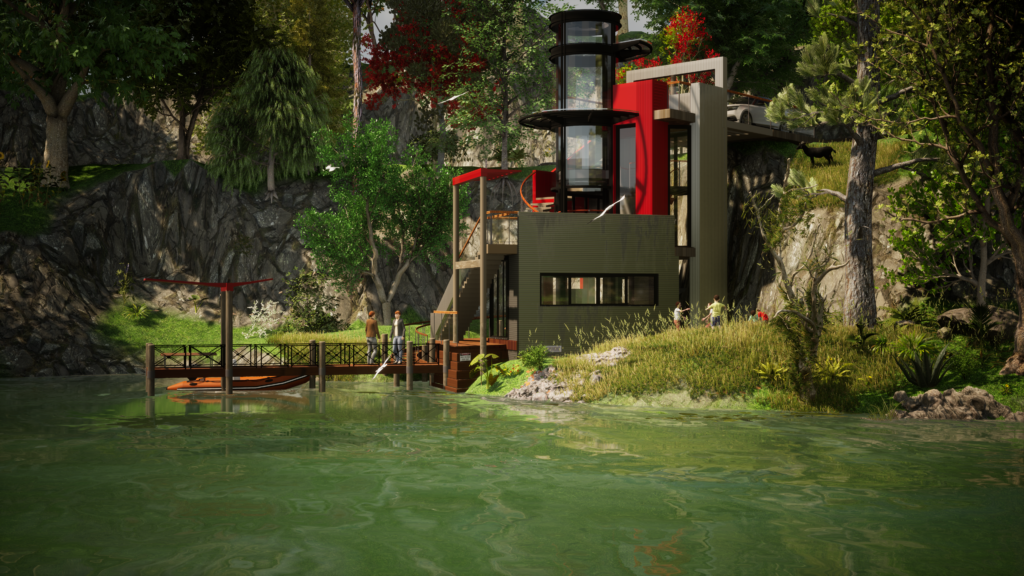
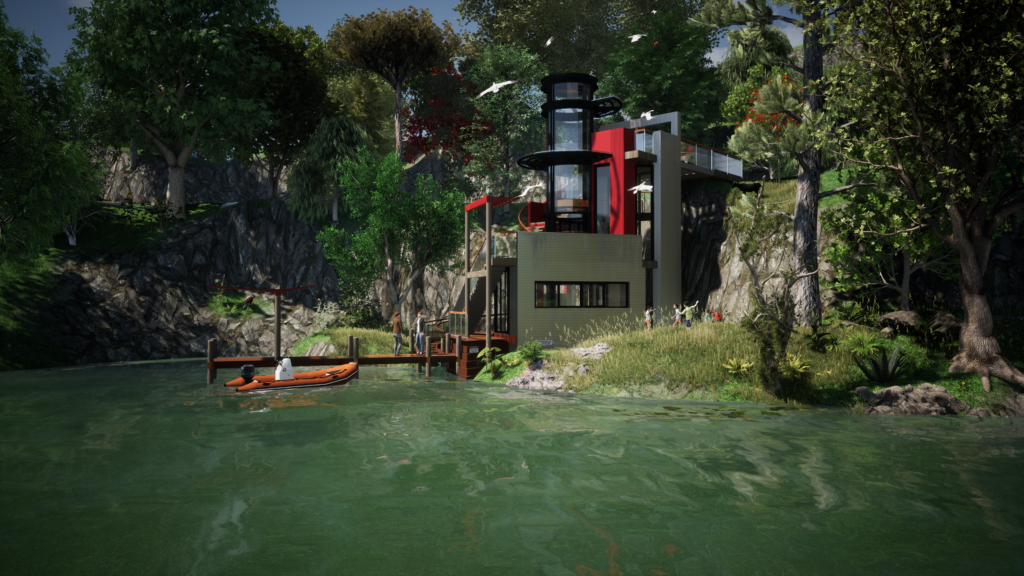
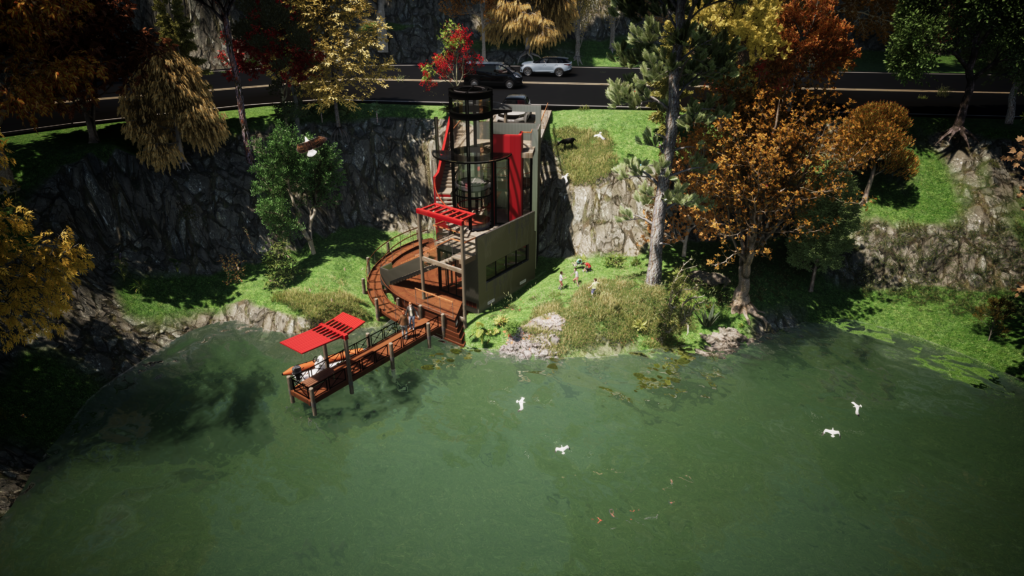
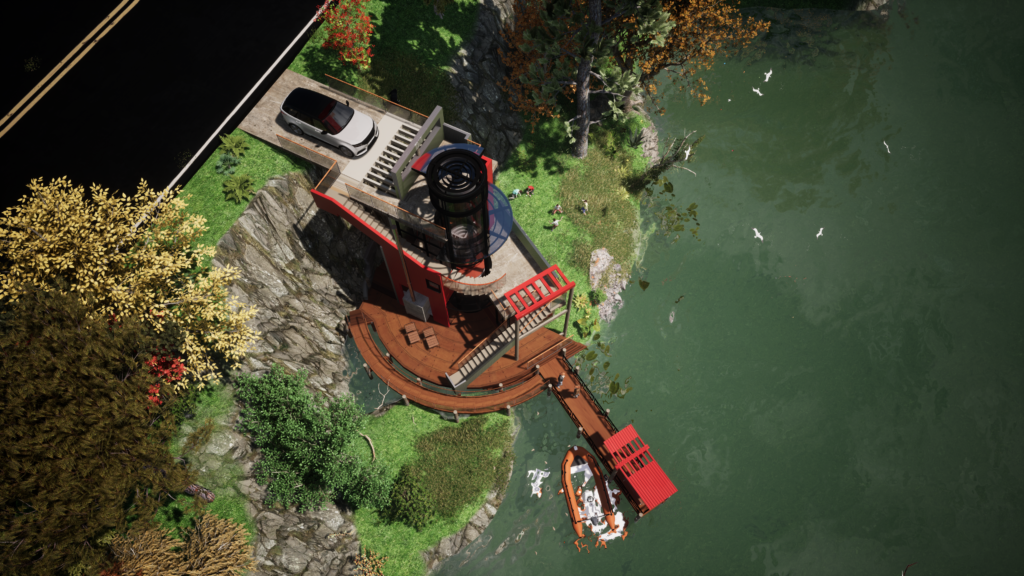
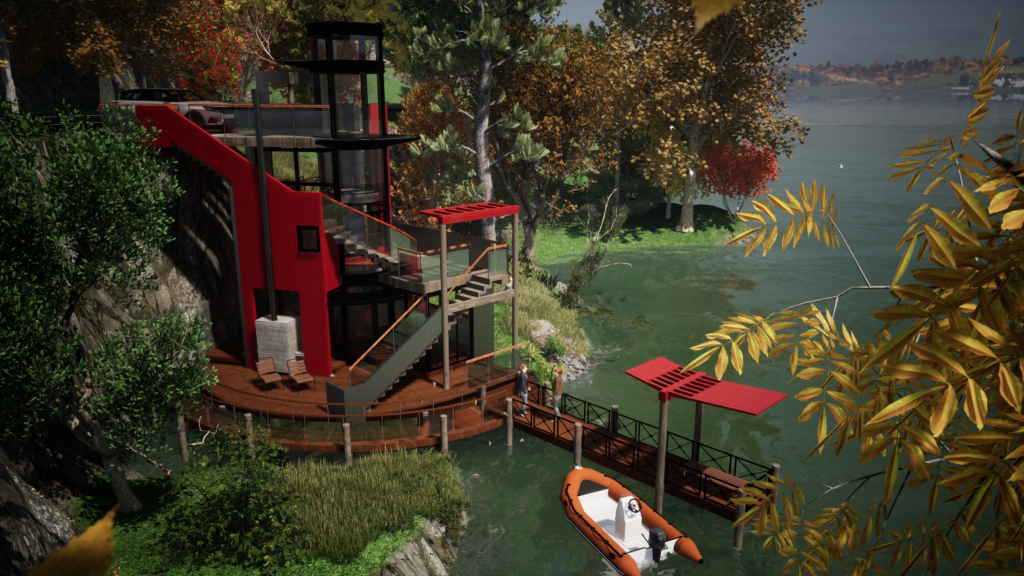
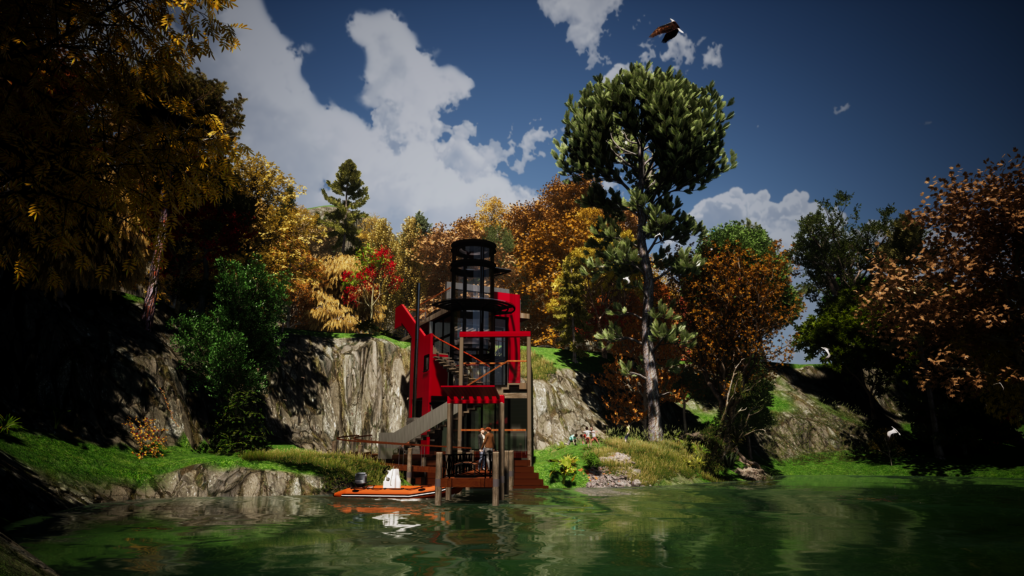
Micro Housing Project
The building consists of 4 towers with 8 double-height lofts with a mezzanine each. The vertical access core contains the exterior stairs and the elevator shaft, fully glazed to give the sensation of transparency that communicates with the concrete towers through wooden decks that configure the access terraces. The idea is to avoid long horizontal circulations by replacing them with access plazas, as in the “Hanging Gardens of Babylon.
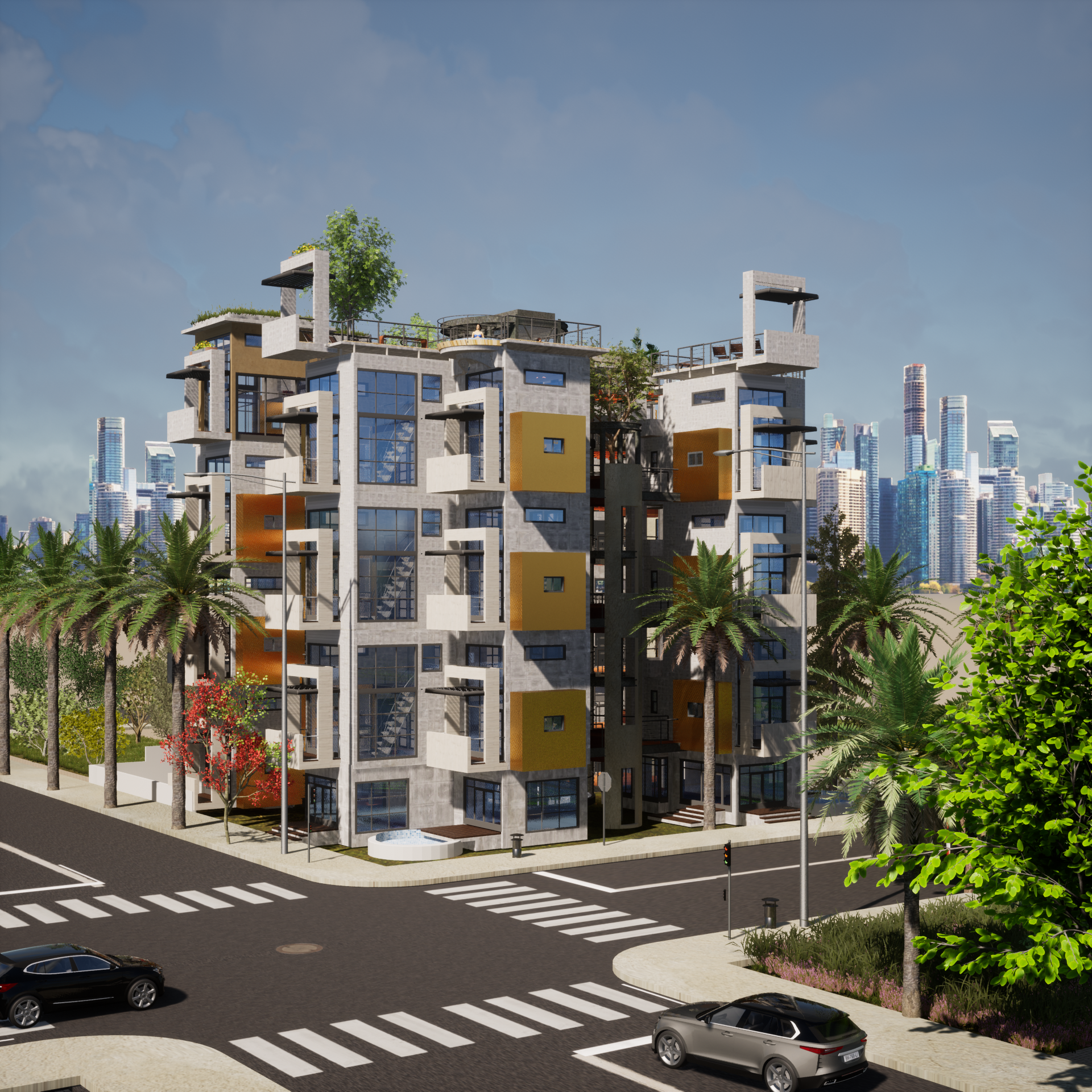
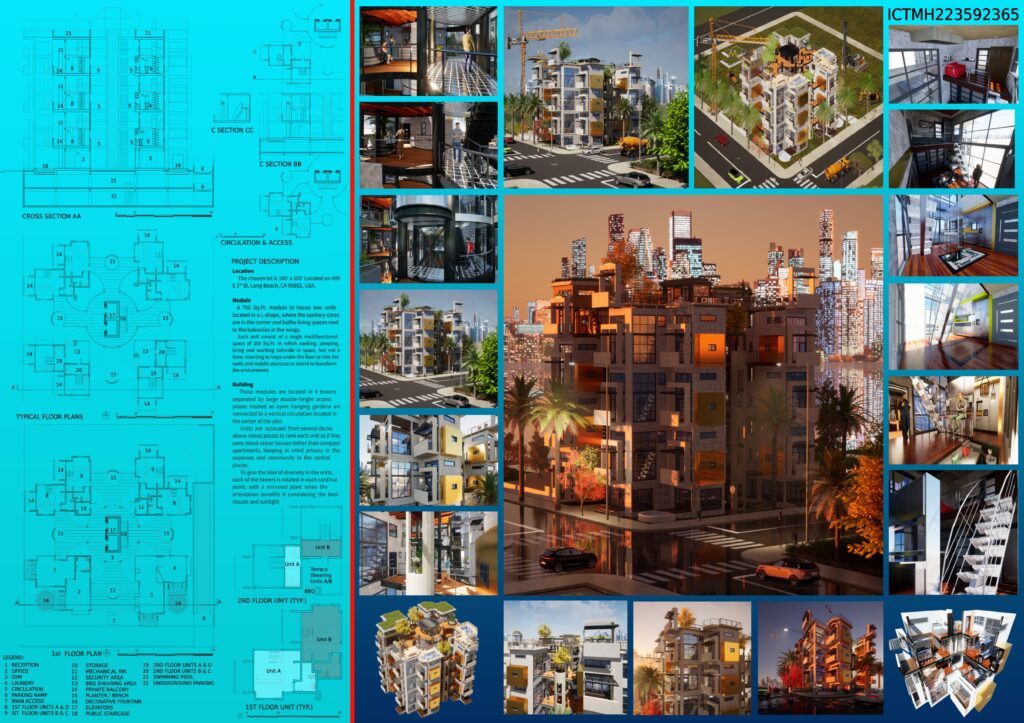
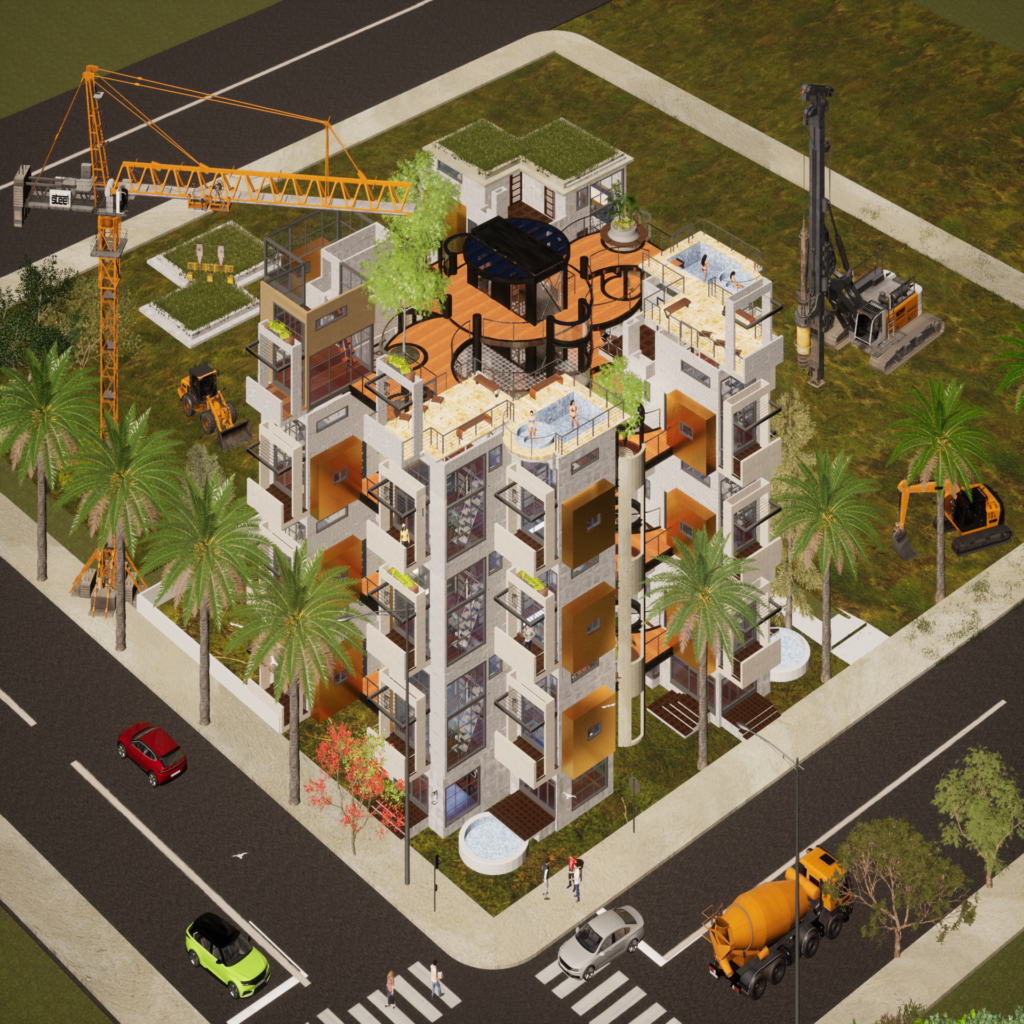
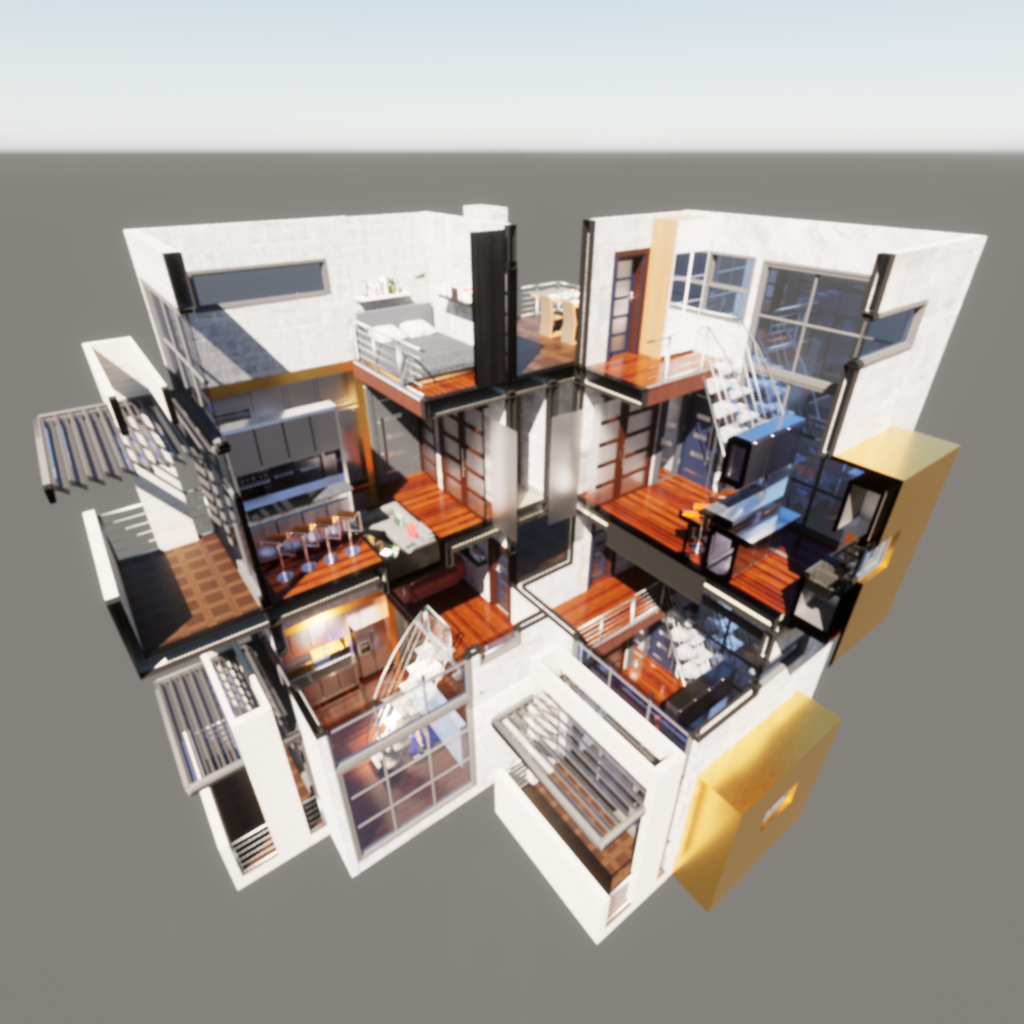
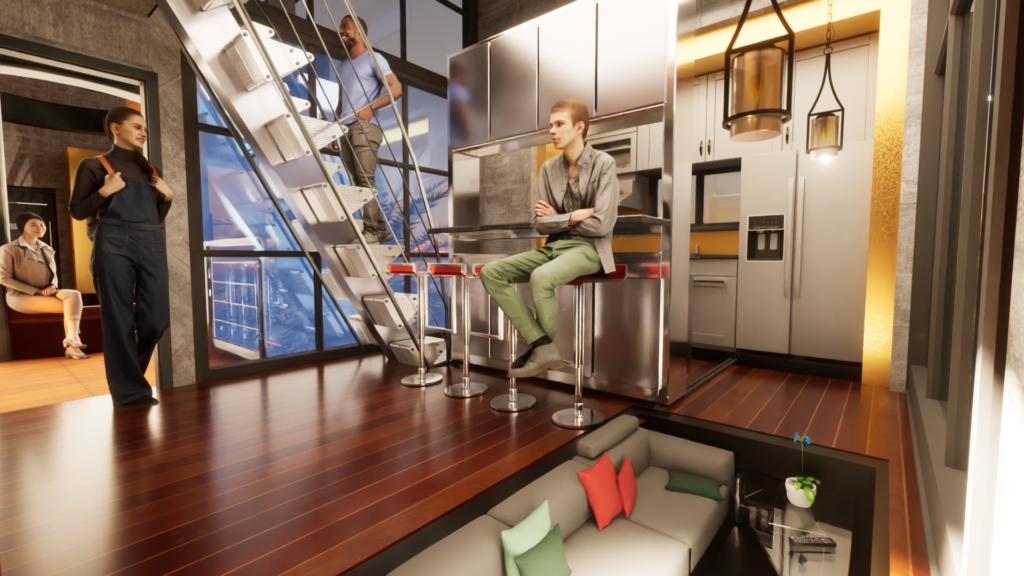
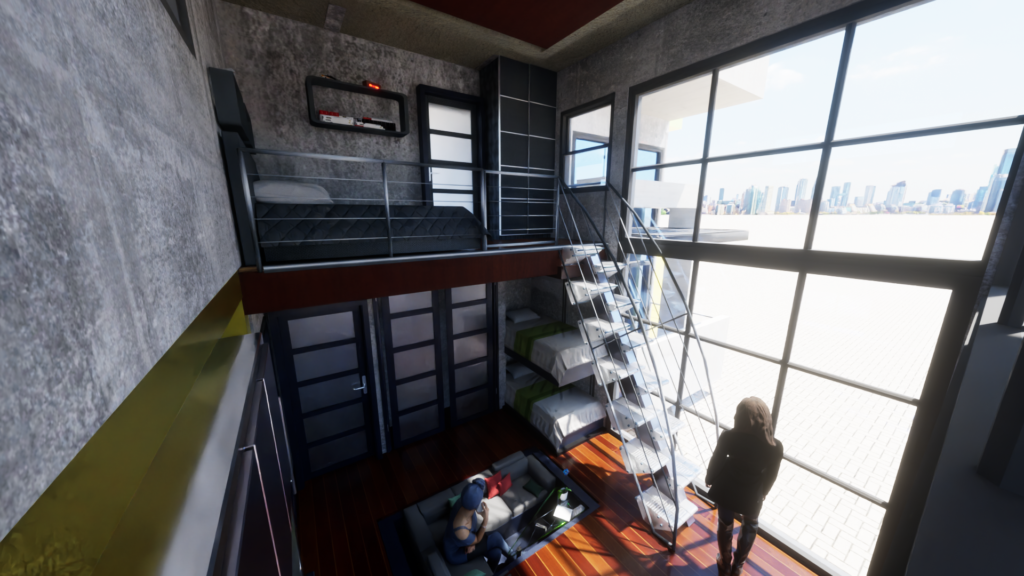
Miami Floating Stage
The Concept
The concept was inspired by oil rigs.
The flotation platforms are equipped with separate motors synchronized to meet the triple function of displacement; the unfolding of the trays from the center and keep the momentum of the whole, concentrically positioned to generate centrifugal force.
The structure is resolved into four levels: the flotation level, which stores the machinery of the lifting hydraulic pistons of the different trays and propulsion engines, located within the flotation platforms.
The deck level, in which the dressing rooms, restrooms, general storage, image and sound room, press room, and the crew and captain’s cabin are located.
Two emergency staircases and a lift, located in each of the three structural columns, link these levels to the stage and backstage; and a retractable spiral staircase, located in the back of the lift, connects this level with the bridges and grill located on the stage, from which the different curtains hang.
The front tray can be converted into bleachers that can be used as the orchestra pit, in musical performances, taking advantage of their inclination to access it directly from the deck level.
The materials to be used in the structure and flotation platforms are Aluminum, and the partition walls are made from Titanium panels, which gives low maintenance as well as a lower operating cost due to the specific weight, which helps to ease the mobile loading trays.
The roof deck and the stage will be made in treated teak wood, dried in an autoclave and cemented.
The roof of the stage, backstage and wings will be like bellows composed of a series of linked poly-carbonate panels, folded with metal ball joints, to give protection and also serve as adjustable acoustic panels according to the activity carried on stage.
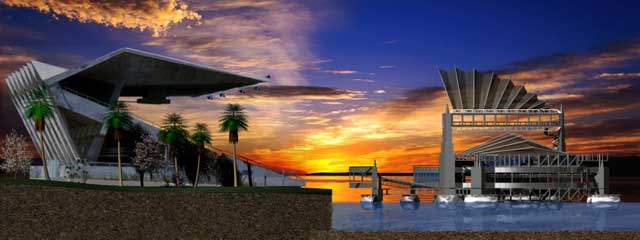 Side view of the Floating Stage in front of the Miami Marine Stadium, in fully expanded stage.
Side view of the Floating Stage in front of the Miami Marine Stadium, in fully expanded stage.
 Aerial view in folded position (wire-frame)
Aerial view in folded position (wire-frame)
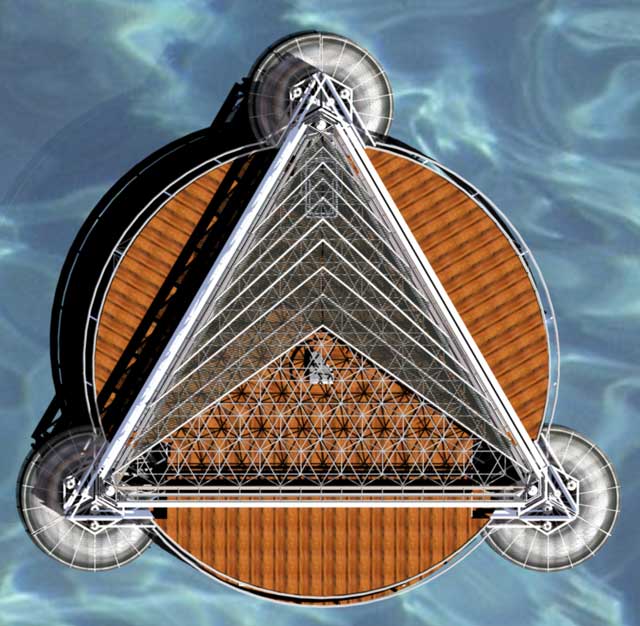 Aerial view in folded position
Aerial view in folded position
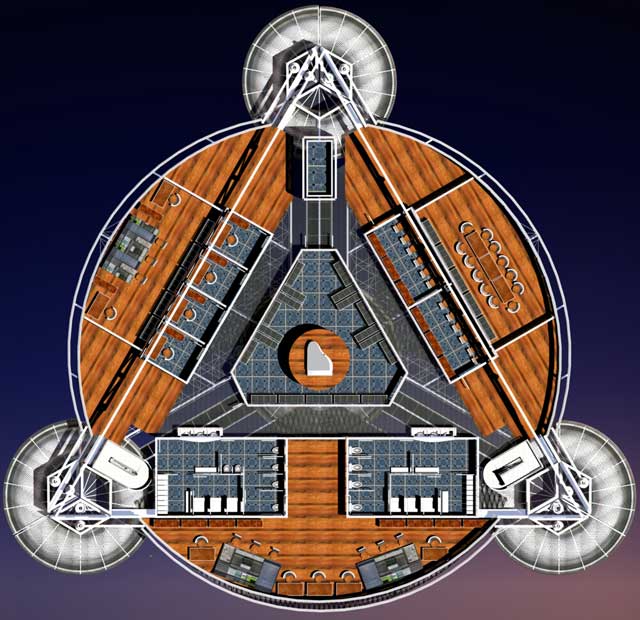 The deck level, in which the dressing rooms, restrooms, general storage,image
The deck level, in which the dressing rooms, restrooms, general storage,image
and sound room, press room, and the crew and captain’s cabin are located.
 Exterior view in folded position
Exterior view in folded position
Side view in folded position
The lifting hydraulic pistons (folded position)
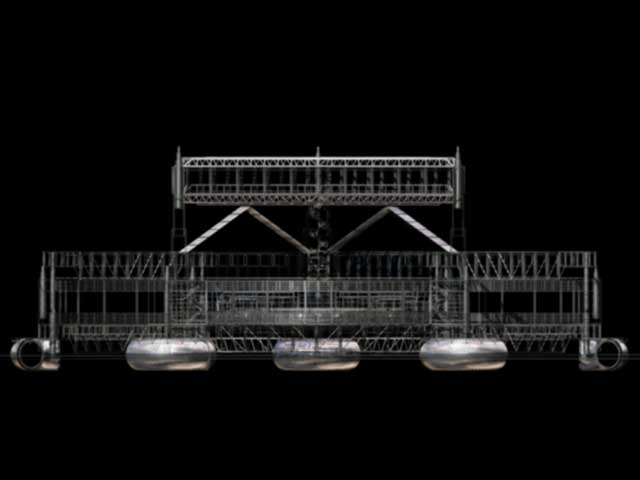 Wire frame structure
Wire frame structure
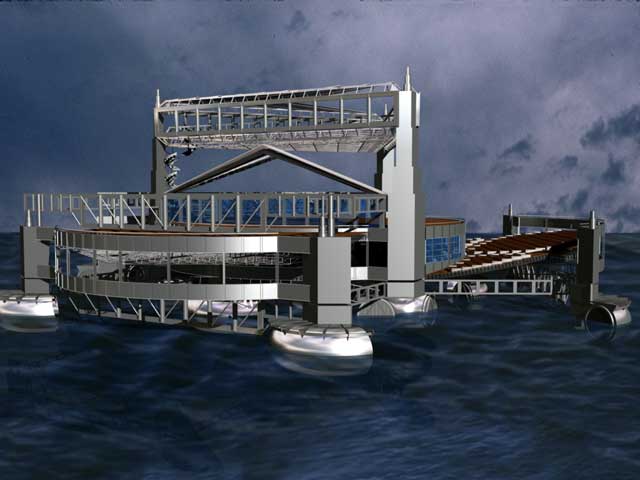 The front tray can be converted into bleachers that can be used as the orchestra pit, in musical
The front tray can be converted into bleachers that can be used as the orchestra pit, in musical
performances, taking advantage of their inclination to access it directly from the deck level.
 Rear view of the Floating Stage in front of the Miami Marine Stadium, in fully expanded stage.
Rear view of the Floating Stage in front of the Miami Marine Stadium, in fully expanded stage.
